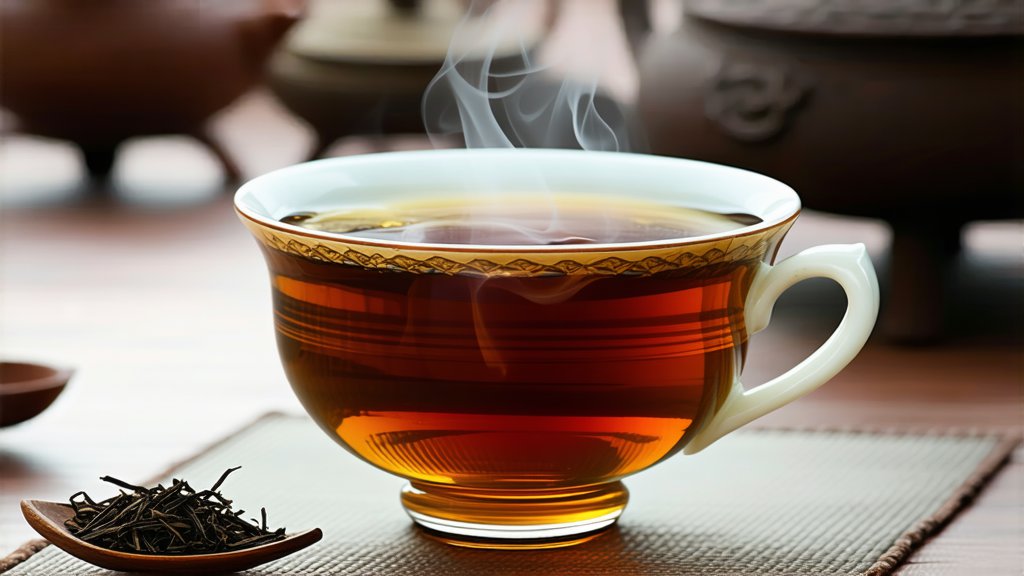
Pu-erh tea, one of the most revered varieties within the realm of Chinese dark teas, has captivated tea enthusiasts worldwide with its rich history, intricate production methods, and profound depth of flavors. Originating from the Yunnan province, this unique tea undergoes a post-fermentation process that distinguishes it from other types of tea, giving it a character that only matures with age. In this exploration, we delve into the fascinating journey of Pu-erh tea – from its ancient roots to modern-day appreciation, encompassing its historical significance, various types, meticulous craftsmanship behind its creation, and the art of its tasting.
A Historical Legacy
The story of Pu-erh tea dates back over a thousand years, intertwining with the ancient trade routes known as the Tea Horse Road. This network connected Yunnan, a region known for its ideal growing conditions for tea cultivation, with Tibet and other neighboring regions. Initially, the tea was transported as compressed cakes or bricks, making it easier to carry over long distances on horseback. Over time, these journeys not only facilitated trade but also allowed the tea to age and develop complex flavors during transit, leading to the discovery of its unique fermentation process.
Types of Pu-erh Tea
Pu-erh tea is broadly categorized into two types: raw (Sheng) and ripe (Shou). Each type offers distinct characteristics and aging potentials:
-
Raw Pu-erh (Sheng): Made from sun-dried tea leaves that undergo natural fermentation over time. Its flavor profile evolves significantly as it ages, starting with a more robust and astringent taste that mellows into a smoother, earthier flavor profile after several years.
-
Ripe Pu-erh (Shou): Produced through a accelerated fermentation process known as "wet piling," where piles of tea are dampened and turned regularly to encourage microbial activity. This results in a tea that has a mellower, richer flavor immediately upon production, often described as woody, earthy, or even slightly sweet.
The Art of Craftsmanship
The production of Pu-erh tea is an art form that requires precision and patience. The process begins with the careful selection of high-quality tea leaves, typically from ancient tea trees found in the mountainous regions of Yunnan. These leaves are then picked by hand, ensuring only the finest buds and leaves make their way into the final product.
For raw Pu-erh, the leaves are sun-dried, lightly withered, and then either pressed into various shapes like cakes, bricks, or tuocha (nestle shapes), or left loose. The magic of Sheng Pu-erh lies in its slow natural fermentation, which can take decades to fully mature.
In contrast, the production of ripe Pu-erh involves a more controlled fermentation process. After initial processing, the leaves are piled up and dampened to create a humid environment conducive to microbial growth. This "wet piling" process lasts several weeks to months, depending on the desired outcome, before the tea is dried and sometimes pressed into shape.
Tasting the Essence of Pu-erh
To truly appreciate Pu-erh tea, one must engage in the ritual of tasting, which goes beyond mere sipping – it's an experience that engages all senses. Here's a guide to savoring this ancient brew:
-
Preparation: Begin by selecting a suitable vessel, such as a Yixing clay teapot or a Gaiwan (a Chinese lidded bowl). Use water heated to around 95°C (203°F) to extract the best flavors without scalding the leaves.
-
Rinsing: Rinse the tea leaves briefly with hot water to awaken them and remove any surface dust. Discard this first infusion.
-
Steeping: For raw Pu-erh, steep for about 10-15 seconds initially, gradually increasing steeping time with each subsequent infusion. Ripe Pu-erh may require shorter steeping times due to its already mellow nature.
-
Observation: Examine the tea liquor's color, which can range from pale yellow for young Sheng to deep red-brown for aged Shou. Note the clarity and any sediment present.
-
Aroma: Inhale deeply to detect the tea's aroma, which can vary greatly between raw and ripe Pu-erh, ranging from fresh and floral to earthy and woody.
-
Tasting: Take a small sip, allowing the tea to coat your palate. Pay attention to its texture, body, and complexity. Notice how the flavors evolve with each sip and across multiple infusions.
-
Aftertaste: Savor the lingering aftertaste, which can be a testament to the tea's quality and aging potential.
In conclusion, Pu-erh tea embodies a living tradition that bridges past and present, offering a window into China's rich cultural heritage while continuing to evolve and enchant tea lovers globally. Its intricate production methods, meticulous aging process, and the depth of its flavors make every cup a journey worth embarking upon. Whether you're a seasoned tea connoisseur or a curious newcomer, exploring the world of Pu-erh tea promises an enlightening and sensory adventure.